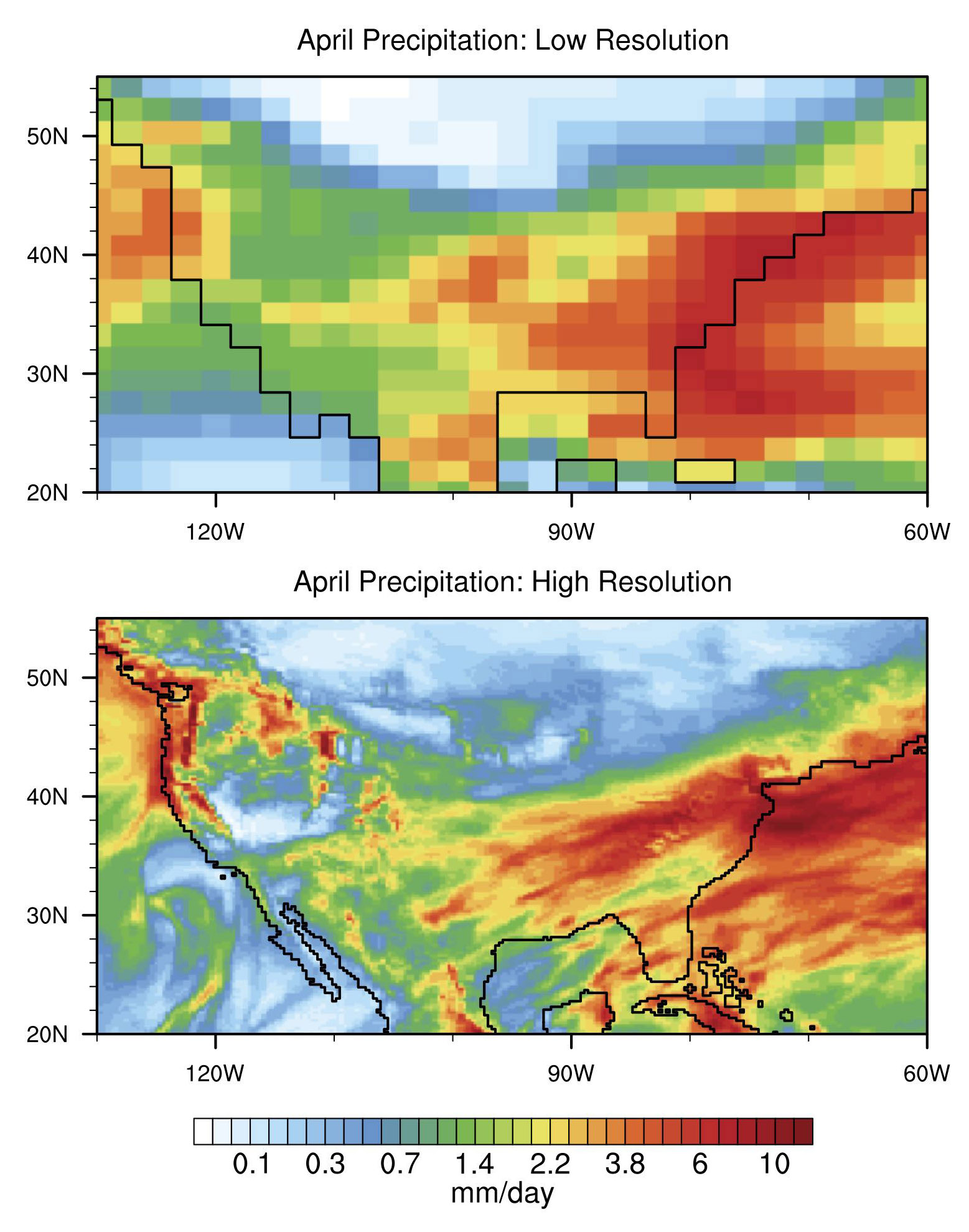Climate Response to Mid-Cenozoic Loess in the Western USA
Loess deposits consist of fine-grained, windblown sediments and contain critical information about continental aridification processes that are key to understanding biotic evolution and climate change. This project integrates paleoclimate simulations with field data collected from loess deposited ~37-30 million years ago to understand the nature, causes, and paleoclimatic importance of these loess deposits. This project will promote further development of the high-resolution Community Earth System Model to be used to better understand ancient climate changes. (Collaborating with Prof. Fan at University of Texas-Arlington)

Antarctica during the Last Interglacial
The spatial extent of the West Antarctic Ice Sheet during the last interglacial period (129,000 to 116,000 years ago) is currently unknown, yet this information is fundamental to projections of the future stability of the ice sheet in a warming climate. Paleoclimate records and proxy evidence such as dust can inform on past environmental conditions and ice-sheet coverage. This project will compare Earth-system model simulations of dust and water isotopes with geochemical measurements of dust from Antarctic ice collected at Allan Hills. These changes will then be to determine past conditions and constrain the sensitivity of the West Antarctic Ice Sheet to warming. (Collaborating with Prof. Aarons at Scripps)
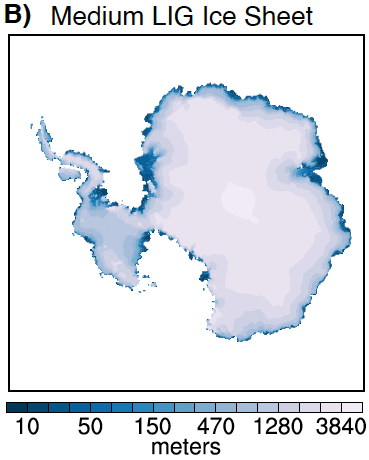
End-Cretaceous mass extinction
Over 75% of all species went extinct across the Cretaceous-Paleogene Boundary (66 million years ago). This extinction coincided with a massive asteroid impact in the Yucatan Peninsula, which emitted gases and particles high into the atmosphere and caused widespread fires. We are using an Earth system model to simulate the climate responses to emissions of dust and sulfur from the impact and soot from fires. (Collaborating with Prof. Lovenduski and Prof. Sepulveda at University of Colorado, Dr. Bardeen at NCAR, Prof. MacLeod at University of Missouri, Prof. Mitra at Eastern Carolina University, Prof. Harrison at University of Texas-RGV)
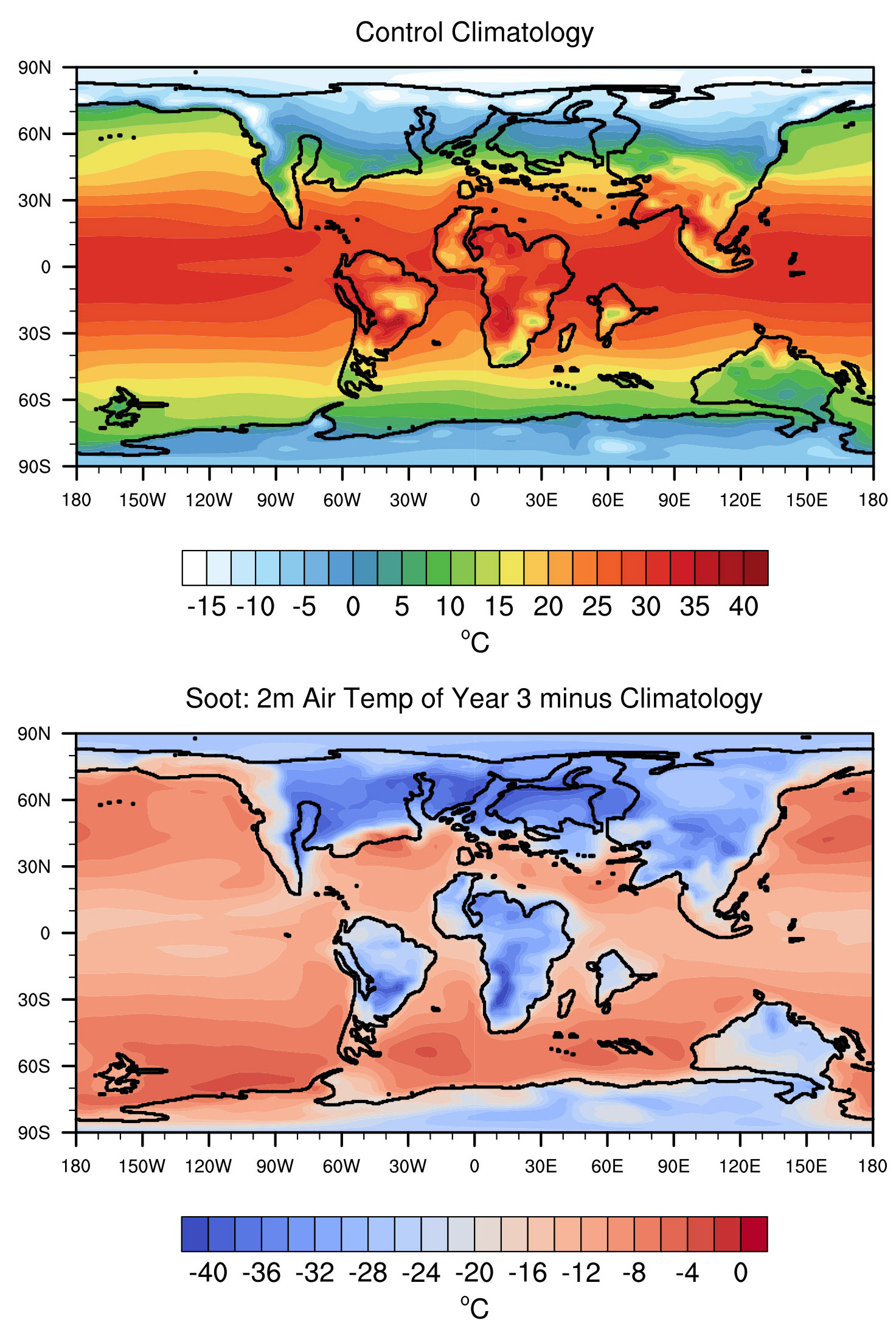
Miocene co-evolution of landscape, climate, and biodiversity
In the middle Miocene, a pulse of mammal diversity tracks the rate of extension within the collapsing orogen of what is now the Basin and Range province. Using constraints from the models of paleotopography and climate, we test hypotheses that relate these dramatic changes in mammal diversity to the development of large-scale gradients in topography, climate, and the removal of large topographic barriers (Collaborating with Prof. Holt and Prof. Smiley at Stony Brook University, Prof. Badgley at University of Michigan). We are also researching South American monsoon evolution during the middle Miocene climate optimum. (Collaborating with Prof. Carrapa at University of Arizona, Prof. Clementz at University of Wyoming)

Mid-Pliocene storms and the North American monsoon
Recent multi-year droughts in the American Southwest highlight the need to improve predictions of southwest climate responses to rising greenhouse gases. Climate model experiments of future emissions scenarios as well as past warm intervals like the mid-Pliocene (3.0 – 3.3 Ma) predict widespread drying in response to rising greenhouse gases. However, proxy records suggest wet conditions during the Pliocene, in direct contradiction with simulations. We are carrying out a suite of high-resolution Earth system model simulations to explore mid-Pliocene changes in the North American Monsoon (NAM) as well as other fine-scale circulation features that may bring precipitation to the western North America in a warm world. (Collaborating with Prof. Bhattacharya at Syracuse University)
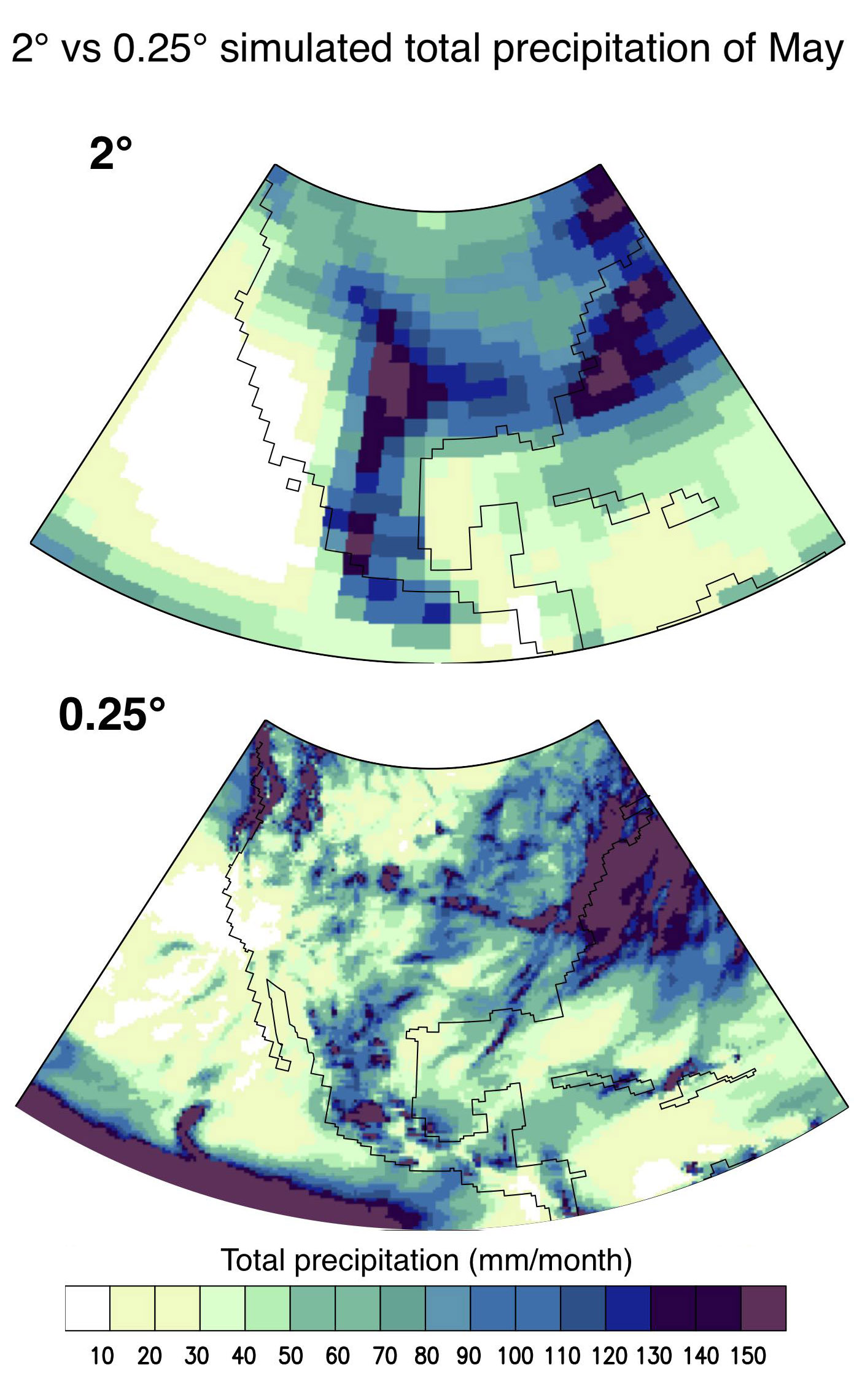
Sensitivity of Walker circulation to CO2 forcing during the late Pliocene
The Pacific Walker Circulation is a key feature of the climate system; it impacts temperature and rainfall worldwide, with important socioeconomic consequences. The late Pliocene is an attractive target for understanding sensitivity of Pacific Walker Circulation to changes in atmospheric carbon dioxide concentrations because it features biome distributions, geography, and topography that are similar to the present-day. Carbon dioxide concentration decreased from roughly today’s level during the mid-Piacenzian (3.3 – 3.0 million years ago) to around the preindustrial level during the early-Pleistocene (<2.58 million years ago), coincident with (and perhaps driving) the expansion of Northern Hemisphere ice sheets. The study will develop water isotopologue tracking enabled Earth System Model simulations to investigate Pacific Walker Circulation sensitivity to late-Pliocene changes in carbon dioxide concentrations and ice sheets. (Collaborating with Prof. Bhattacharya at Syracuse University)

Constraining sea level across the Pliocene
With carbon dioxide concentration similar to present-day and global temperatures 2-4°C warmer than preindustrial, the Pliocene is a potential analog for future climate change. Sea level was likely higher during the Pliocene, but significant uncertainty remains, with estimates ranging from 0 to 50 meters above present-day. To refine sea level estimates during the Pliocene, this project will include a series of Earth system model simulations to reinterpret records of past temperature and ice volume. The Earth system model data from this project will go into a public database, providing a community resource for education and future research.
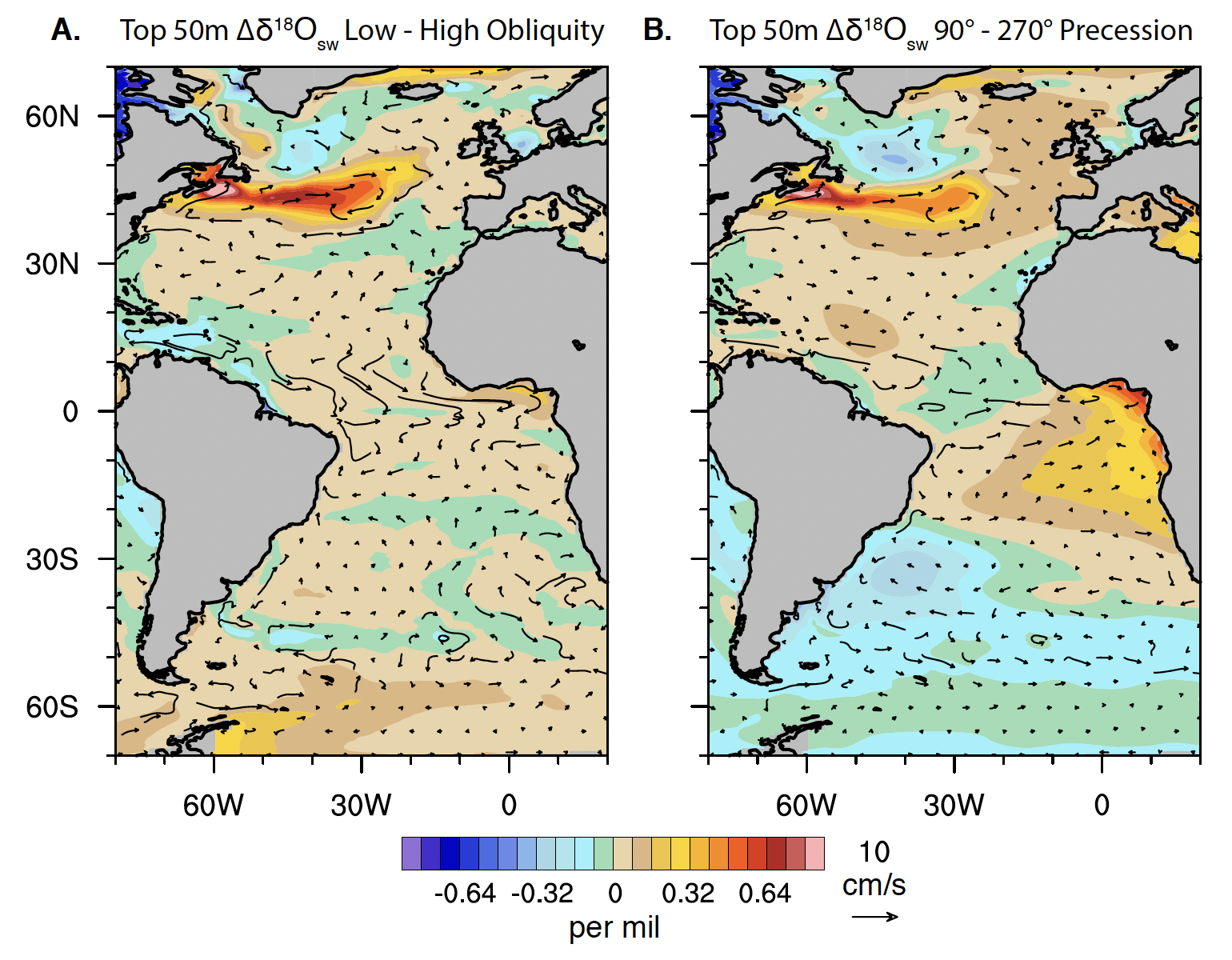
Last Glacial Maximum Hydroclimate in Southwest US
Southwest North America is one of the world’s most climatically sensitive regions with inherently variable hydroclimate. Evidence exists for repeated, large regime shifts in this region’s hydroclimate at the sub-decadal to millennial-scale during the last glacial cycle and Holocene, but the mechanisms driving this change remain uncertain. We are conducting high-resolution Earth system simulations to evaluate how North Pacific storm track behavior and the resulting precipitation signal is archived in the stalagmite proxy records, and the mechanisms underlying changes in precipitation in the context of the changing environmental forcings of the past 21,000 years (Collaborating with Prof. Montañez at UC Davis, Prof. Oster at Vanderbilt University, Prof. Lofverstrom at University of Arizona)
